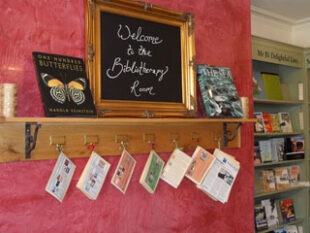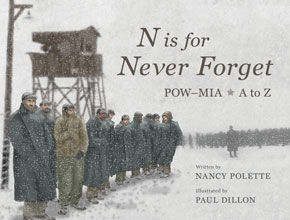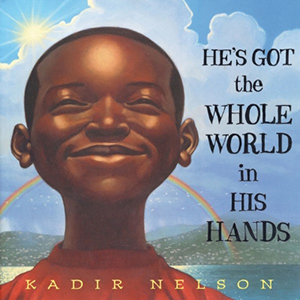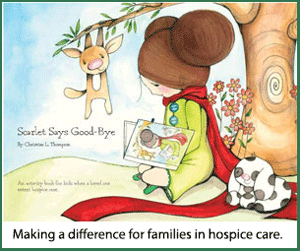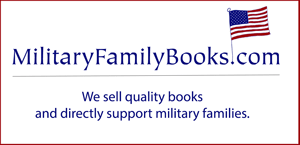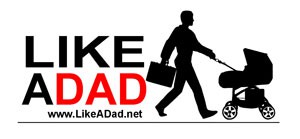Can reading books cure what ails you? Perhaps not the flu or the common cold, but people have followed a “books as medicine” mantra for centuries using a technique called bibliotherapy. It may sound like a new-fangled term and practice, but the act of using books as medicine—as therapeutic treatment—dates back to ancient Greece. The practice has evolved for the modern age, helping children cope with strong emotions and learn empathy, and allowing adults to explore their own inner worlds in a way that is as simple as reading a story. For booklovers, any time spent reading can feel cathartic—and sometimes that’s the point.
“There are examples in our distant past that people had thought about reading and books in a therapeutic way,” says Jesse Miller, whose doctoral dissertation focused on the history of bibliotherapy. “For example, the idea from the philosopher Aristotle that going to the theater and watching tragedies can be a cathartic experience. The idea of catharsis was something that was much later taken up as kind of a key term in psychoanalysis.”
Shift in Perspective
Jesse, a clinical assistant professor in the School of Management at the University at Buffalo, says that the term bibliotherapy became more widely used in the nineteenth and twentieth centuries as people shifted their thinking about mental illness, especially in the United States and western Europe.
“One of the sort of innovations in this is what is sometimes called the moral treatment or the moral method of treatment. This was started by Quakers and what it suggests is that before, what was mental illness—or described as madness—is not completely untreatable,” Jesse says. “People designated as mad would be put in asylums or locked up in prisons. Moral treatment suggested that these people could be rehabilitated through strong guidance and teaching.”
As part of this shift, people who were in these asylums were no longer confined and physically restrained. Instead, there were activities like reading, writing, gardening, and other physical recreation. This is where bibliotherapy in practice began in a more formal way, Jesse says, but it didn’t really take off entirely until around World War I.
“That is when the Library War Service was established,” Jesse says. “Its job was to help get books to soldiers who were on bases and away from the US on the front. They did all of this fundraising and collecting of books from citizens and worked to get those books to libraries on military bases and base hospitals. There were a number of different explanations as why those books were important—a form of entertainment and keeping morale up, preparing for vocation after the war—but another explanation offered was that there was a therapeutic element, especially in the hospitals. They used these kind of metaphors that books are like medicine so they can heal the soul in ways that medicines heal the body. There were therapeutic reasons for helping soldiers who had been stuck in hospitals where soldiers were wounded or in the tuberculosis hospitals where soldiers could be confined for a very long time.”
Then, Jesse said, the justification for having books for soldiers came back to the home front and that same language was used to advocate for the establishment of libraries in hospitals for patients.
Helping Children Process Emotions
But patients aren’t the only people who benefit from hospital libraries and bibliotherapy. Mary Catherine Miller, a palliative care child life specialist, offers support and therapy services to children in families with adults who are critically injured, going on hospice, or have advanced illnesses. Mary Catherine and her Support and Palliative Care team at Baylor University Medical Center in Dallas, Texas, use bibliotherapy as a part of their sessions.
“We typically [use bibliotherapy] at the beginning of the visits to open up conversation,” Mary Catherine says. “We ask ourselves: How can we utilize bibliotherapy to normalize, validate, identify, and acknowledge big worries [that are] weighing heavy on [the children] to begin processing?”
For Mary Catherine and her team, the use of bibliotherapy is about having an accessible format for children to experience and be immersed in the book. It’s a combination of using the plot, characters, and emotions along with the overall narrative, to help children understand and process their own thoughts, feelings, and emotions.
“Sometimes the situation they are going through is represented in the book, but they don’t yet have the vocabulary to put words to their fears, and they don’t know our misconceptions about how they are feeling,” Mary Catherine says. “We can use the elements of the book to validate that it is okay they feel this way and create a healthy model of attachment and support systems by saying, ‘This character has experienced this same scenario.’”
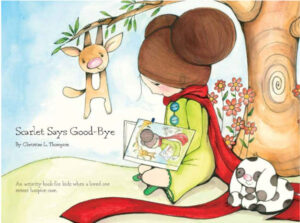
Scarlet Says Good-Bye by Christine Thompson is one of the books the Supportive & Palliative Care team at Baylor University Medical Center reads as bibliotherapy with children who have a loved one in hospice.
Sometimes Mary Catherine needs to change the narrative of the book a bit—like a grandpa character into a grandma character—to help children identify more with the story. That technique along with others, like pausing during the story to ask open-ended questions, allow children to open up, find their voice, and connect to the book and to the people around them.
“They are growing in their ability to establish emotions. They need a caring adult to help them brainstorm. They need someone to hold their hand and walk their journey with them,” Mary Catherine says.
As for results? Many times, children are shocked that they aren’t alone, she says.
“Kids can’t understand that anyone else around them has the same sense of loss. The six-year-old who thinks their three-year-old sister isn’t affected by the death of their mom. Or the other six-year-old that had a grandparent die. It’s such a joy to help them realize that they aren’t alone,” she says.
Educational Uses
Other times, bibliotherapy is used for educational purposes in addition to the therapeutic elements.
“We have diagnostic and treatment books,” Mary Catherine explains. “They help kids understand why [their loved one] is responding the way they are, or the way treatments can affect the body and why someone may be more irritable or more upset. It’s like telling them, ‘Dad still loves you the same and he wishes he had the energy to come to your soccer game.’ It’s not someone choosing not to live.”
She recalled a child who was in her program after their father collapsed. The child thought they had done something wrong—that the problem happened when their father laid on the floor too long, not in their father’s initial fall. Through talking and bibliotherapy sessions, Mary Catherine was able to understand that their parents stressed that there were germs on the floor, so the child thought, “My daddy is sick because he laid on the germy floor for too long” not because there was an underlying heart condition that caused the collapse in the first place. That gave Mary Catherine the opportunity to talk about the function of the heart with the child and explain the fall was no one’s fault and wasn’t caused by an external factor in that moment.
“That’s books. That’s bibliotherapy. It starts with education,” Mary Catherine says. “Education starts with kids through narrative-based books and explanations for them to see [the world] through that third-party.”
Growing Applications
But bibliotherapy isn’t always reading about specific problems and characters experiencing the same scenarios as the patient—and it’s useful for more than just children.
While Jesse is a full-time academic now, he was the 2015-2016 New York Council for the Public Humanities Fellow. During that time, he worked on preliminary research for an experimental bibliotherapy project “Reading for Heath(Care).” He came across a bibliotherapy group held at ECMC Hospital in Buffalo, New York.
“They had this really interesting project that was a partnership between one of the medical psychologists who worked particularly with people with traumatic brain injuries who had partnered with a retired English professor who had come across the idea of bibliotherapy and wanted to do something with it.”
The two partnered to create weekly meetings of reading groups—not necessarily readings directly related to the patients’ experiences, but books the English professor liked or had taught many times before.
“So they would read some Charles Dickens or To Kill a Mockingbird and other kinds of classic, canonical books that you may read in a high school or college English class,” Jesse says. “They would read them chapter by chapter and the English professor would give historical background and the psychologists would be there and direct the conversation to personal connection to the story or emotional things related to the book.”
Fortunately for Jesse, he was working on his dissertation at that time and was able to sit in on the group’s sessions. And fortunately for the rest of us, you don’t need to be a hospital patient or related to one to explore bibliotherapy.

Though the boom of bibliotherapy continues to grow, Mr B’s Emporium of Reading Delights in Bath, United Kingdom, has been offering bibliotherapy sessions in its “Reading Spa” since 2008. Photo courtesy of Shelley Rodrigo, Creative Commons.
Readers can take on bibliotherapy as a solo journey, or find a guide or therapist to work with them, or form a group—like a book club—or any number of other options. The key is for the reader to interact with books in a way that feels helpful.
“It’s completely dependent on the person and their need to feel companioned to gain the courage to try something that may be new or scary or hard,” Mary Catherine says. “Facing emotions is a hard thing. It’s a scary thing.”
Jesse agrees that it’s a deeply personal affair but notes the ever-growing community of Internet bibliotherapists as an interesting side effect of the modern popularity of bibliotherapy.
“In the past 15 or 20 years there has been a general resurgence of the idea of bibliotherapy. Along with that there is a mushrooming of people who call themselves bibliotherapists, who you can pay a certain amount of money to and they will give you certain recommendations,” Jesse says.
He believes this phenomenon is related to the growing interest in self-care and well-being in general, and that books are getting wrapped up in that boom as one tool available to make ourselves feel better.
While he’s unsure of the true value of hiring a bibliotherapist, Jesse maintains the research supports the importance of reading.
“As librarians were trying to advocate for the usefulness of bibliotherapy starting in the 1920s and 1930s, they were continually brought up against the fact that they didn’t have evidence for the therapeutic value. They had the anecdotal evidence, but they didn’t have the scientific proof. Is it just an art or is it a science? It is make-believe or is it a thing?” Jesse says. “Out of that, you begin to see increasing research being done by librarians but also by psychologists that happens over the course of the twentieth century. They are trying to produce data that what kinds of books work, and answer the question ‘Does this really work?’”
One place that the research backs the claims is in early childhood education, Jesse says. In the days of early development, bibliotherapy and discussion can help kids to navigate confusing social and emotional issues—like Mary Catherine does in her work every day.
But still, bibliotherapy for all ages can feel like an obvious treatment to book worms. Of course, books help us. Of course, they are important. How could they not be? If relaxing with a good book and a cup of tea is my go-to, then it ought to be considered therapy, right? It feels like an innate solution.
“[Bibliotherapy] feels like something you already knew about intuitively even before you knew the term,” Jesse says. “I think it’s true that there is a popular conception that literature today is therapeutic. That you might study books in middle school, high school, or college, and you might study them closely. But when people read for pleasure because it’s a form of entertainment, it also provides some kind of important emotional experience that helps us to better understand our own emotional experiences to connect with those of someone else. That’s not how we’ve always thought about reading. It’s a fairly modern way.”
Modern thinking often calls to mind needless complexity. Frequently, people yearn for “the simplicities of the past.” Though it’s not really accurate, the draw people feel to the past as a simpler time is understandable, as it’s a time less reliant on technology and more focused on well-being and interpersonal connections. That may be what is so appealing about bibliotherapy in the first place: All you need to begin is a book.
H.R. Gordon is an author and the cohost of the Stems & Stories podcast. She writes fiction and nonfiction for adults, primarily in the historical, fantasy, and magical realism genres. She is also the publications manager at Elva Resa Publishing. She welcomes connections on all major social media platforms @HR_Gordon.
Read more about how the idea for Scarlet Says Good-Bye came about and the impact it’s having in the community.
The article was first published May 2021.

